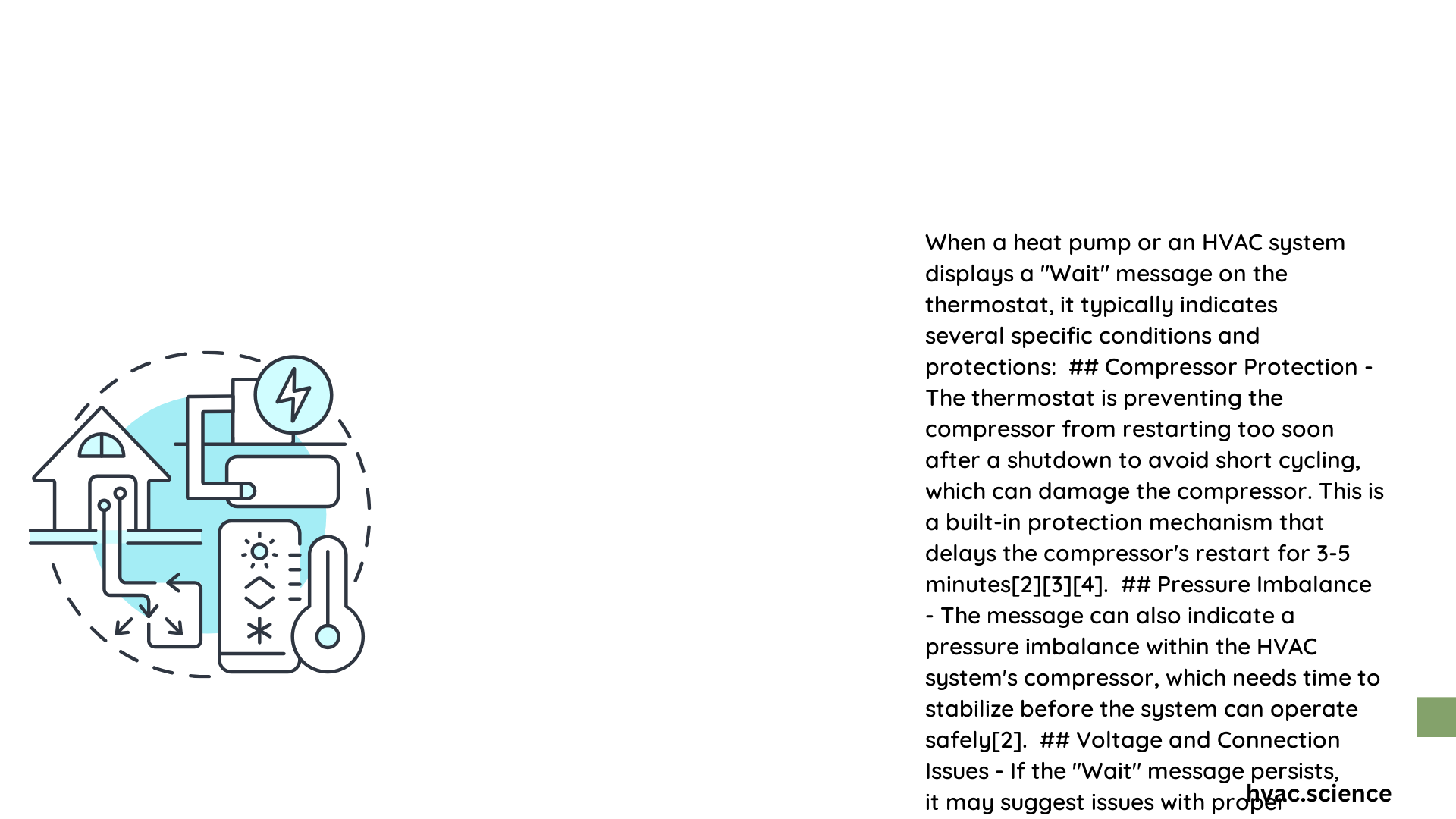Heat pump wait mode is a critical protective mechanism designed to prevent compressor damage by introducing a strategic pause between system cycles. This intelligent feature temporarily halts system operation, typically for 5 minutes, to allow internal components to stabilize and prevent potential mechanical stress or premature wear. By implementing a controlled waiting period, heat pumps can maintain optimal performance, reduce potential repair costs, and extend overall system lifespan.
What Exactly is Heat Pump Wait Mode?
Heat pump wait mode represents a sophisticated safety protocol embedded within modern HVAC systems. When activated, this mode temporarily suspends system operation to protect critical components, particularly the compressor, from potential damage caused by rapid cycling.
Key Characteristics of Wait Mode
| Parameter | Typical Value | Purpose |
|---|---|---|
| Duration | 3-5 minutes | Prevent compressor stress |
| Energy Consumption | Minimal | System protection |
| Activation Trigger | Rapid temperature changes | Mechanical safeguard |
Why Does Heat Pump Wait Mode Occur?

Heat pump wait mode typically activates due to several specific scenarios:
- Rapid Temperature Fluctuations
- Sudden thermostat setting changes
- Extreme external temperature variations
-
Inconsistent system load demands
-
Compressor Protection Mechanisms
- Preventing short cycling
- Reducing mechanical stress
- Maintaining refrigerant pressure equilibrium
How to Diagnose Wait Mode Issues?
Troubleshooting heat pump wait mode requires systematic investigation:
- Electrical System Check
- Verify thermostat voltage
- Inspect wiring connections
-
Test battery functionality
-
System Diagnostic Steps
- Power cycle the entire HVAC system
- Check for error codes
- Evaluate compressor performance
Technical Implications of Wait Mode
The wait mode serves multiple technical functions beyond simple system protection:
- Thermal Stability: Allows internal system temperatures to normalize
- Mechanical Stress Reduction: Prevents excessive compressor strain
- Energy Efficiency Preservation: Maintains optimal operational parameters
Advanced Considerations for Heat Pump Wait Mode
Professional HVAC technicians recommend understanding these nuanced aspects:
- Different manufacturers might have slightly varied wait mode protocols
- Modern smart thermostats offer more sophisticated wait mode algorithms
- Wait mode duration can be influenced by specific system configurations
Potential Wait Mode Complications
While generally beneficial, wait mode can indicate underlying issues:
- Persistent wait mode activation
- Frequent short cycling
- Unexplained system interruptions
Recommended Professional Intervention
If wait mode becomes excessively frequent or prolonged, consider:
– Comprehensive system diagnostic
– Professional HVAC inspection
– Potential component replacement
Energy Efficiency Perspective
Wait mode contributes to overall system efficiency by:
– Preventing unnecessary energy consumption
– Reducing mechanical wear
– Maintaining consistent performance
Conclusion
Understanding heat pump wait mode empowers homeowners to make informed decisions about their HVAC system’s maintenance and performance. By recognizing its protective function, users can better appreciate this critical technological safeguard.
